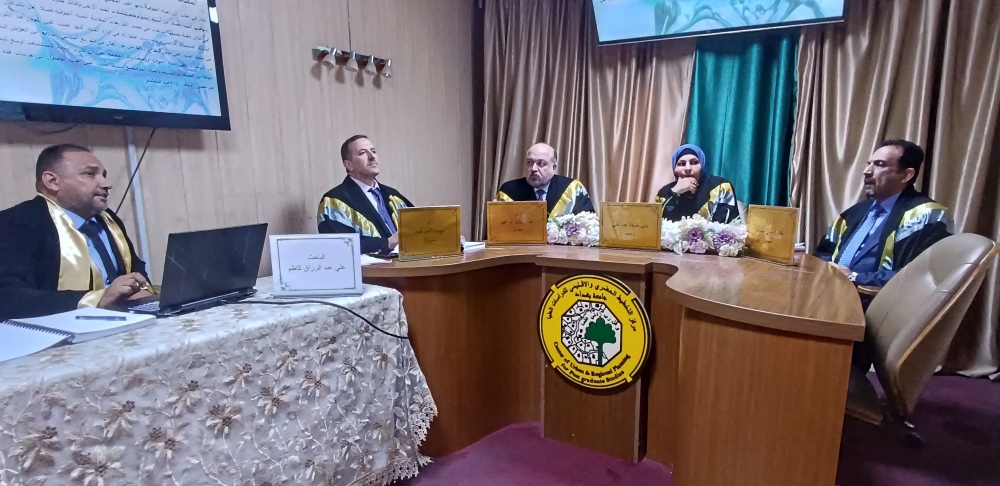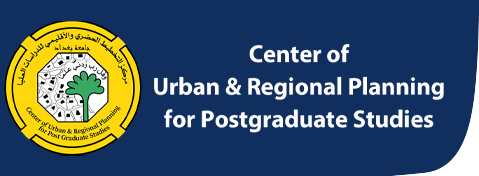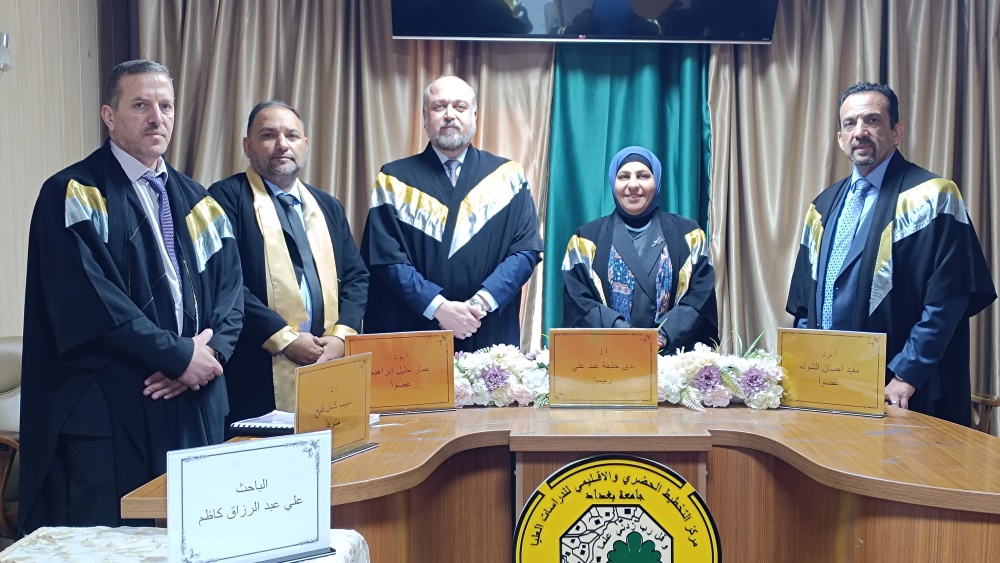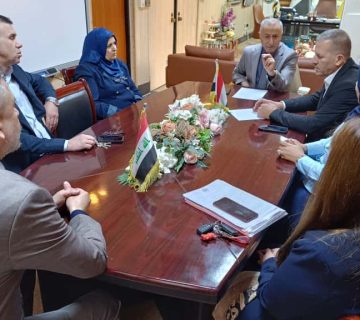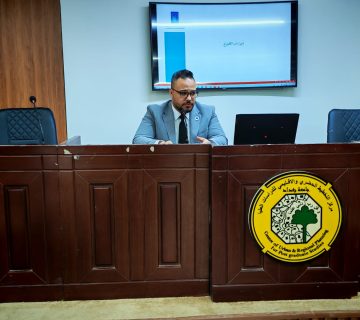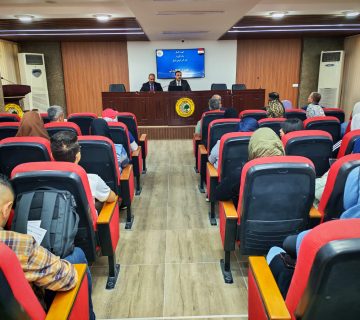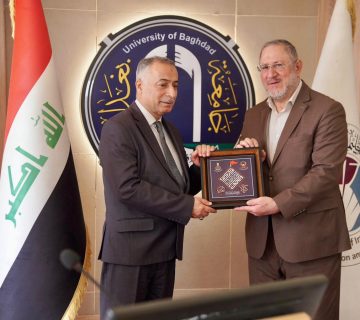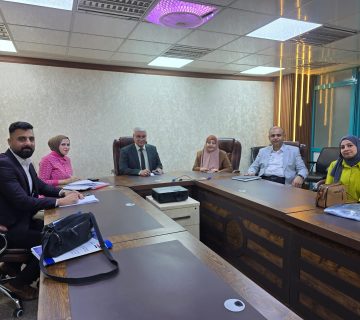The Center of Urban and Regional Planning for Postgraduate Studies at the University of Baghdad discussed the master’s thesis entitled “The Spatial Distribution of Groundwater and Its Impact on Human Settlements,” by student Ali Abdul Razzaq Kazim, under the supervision of Professor Dr. Muhib Kamil Falih. The thesis aimed to identify the locations of groundwater resources within the study area (Ain al-Tamr), create a spatial representation map of water distribution, focusing on areas of groundwater availability, and evaluate the impact of natural and human factors that affect the availability and abundance of this type of water, both quantitatively and qualitatively. It also analyzed its spatial distribution in the study area.
The student hypothesized that there is a spatial relationship between the distribution of groundwater resources and human settlements, as these waters are affected by certain natural and human factors. The message concluded that Ain Al-Tamr is one of the stable areas where the dry climate prevails due to the high temperatures and lack of rain, which led to a scarcity of flood water running in the valleys with high salinity (about 1500-300 mg), thus making the water unfit for drinking. The increasing population, along with the cumulative increase in agricultural areas for wheat crops, has put great pressure on groundwater, and the number of wells has become approximately 1514 this year, after the number of wells did not exceed 350 wells in 2014. Therefore, the message recommended the importance of activating sustainable development of groundwater and not over-exploiting agricultural areas, while monitoring wells in the region, as well as continuously monitoring agricultural activities to prevent any pollution that affects groundwater sources.
